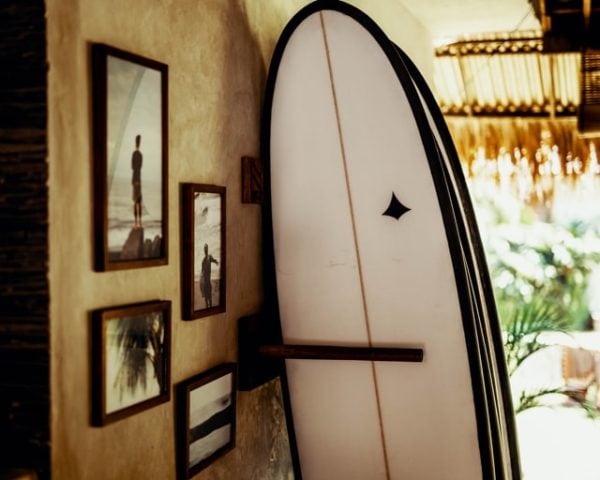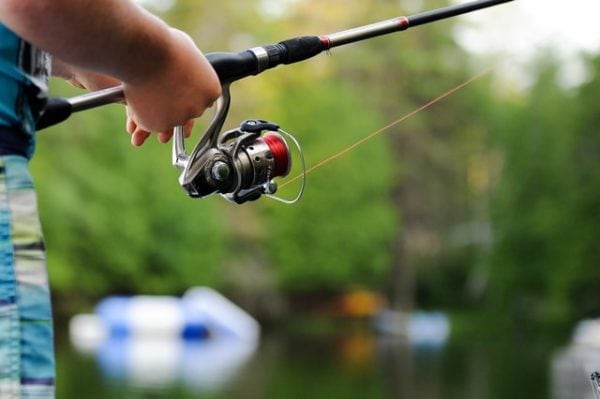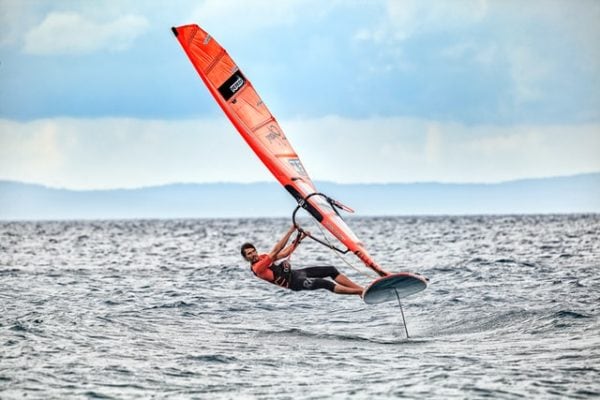How to Store Your Water Sporting Gear
Category: article
Jun 28th, 2021 by Keith Worrall
Modified Feb 16th, 2022 at 6:13 PM

If you want your water sporting and outdoor equipment to last as long as possible, it’s essential to store it properly. Your gear is a considerable cost investment, so maintaining it for the long term will help you get as much value from it as possible. Even if you choose to upgrade to newer equipment, you’ll be able to sell older gear more easily if it’s been well maintained. Here, we’ll outline in detail how to properly stow and maintain the most popular water sporting gear.

Fishing
Fishing is a popular pastime all across North America. Some standard fishing gear includes rods, reels, fishing lines, hooks, lures, floats, and nets. Many people who fish care for their tackle meticulously, but if you’re new to the sport, you will definitely want to follow some of the most common dos and don’ts.
Do
- Keep your fishing poles dry
- Store your fishing poles and reels off the ground
- Clean your rods and reels after every use
- Lubricate parts before putting them into storage for an extended period of time
Don’t
- Allow your poles to get too hot or too cold
- Don’t stow your rods in direct sunlight
- Don’t allow saltwater to sit on your poles after use (salt is corrosive)
- Don’t store your fishing poles with the old line still attached
Preparing Your Fishing Tackle for Storage
It’s crucial to clean your fishing gear after each use, whether you’ve been fishing in fresh or saltwater. Dirt and minerals from the water can sit on your poles and reels, staining them or reducing their functionality over time. You’ll also need to unspool your reels and loosen your drag. Don’t forget to lubricate the mechanical/moveables for storage during the cold season. Although you can use common oil for this task, you may want to opt for specially formulated fishing tackle lubricants.
How and Where to Store Your Fishing Gear
There are many ways to store your fishing gear, but you’ll want to ensure that you don’t stow your equipment in a place that’s subject to temperature extremes. For instance, a detached garage without temperature control may be subject to freezing temperatures and, at other times, high humidity. These extreme weather conditions can warp your poles or damage your other tackle. It’s best to store your fishing equipment in your home or a temperature-controlled garage if possible.
You can purchase ready-made fishing rod racks or even build your own using two wall shelves and storage bins for your reels, lures, sinkers, etc. Be sure that you keep your tackle away from falling objects or in areas where children play, as your items can break easily. You can also procure a strong tackle box to stow your fishing line, hooks, lures, etc.

Surfing
Surfboards and wetsuits can involve some pricey expenditures. Plus, if you love your gear and enjoy using it, you’ll want it to last. Caring for your surf gear well will help you enhance its longevity.
Cleaning
Saltwater can take a toll on all sorts of water sporting equipment, including your surfboard. Before placing your board in storage for even a short time, you should always ensure it’s dry and clean. Cleaning involves removing old wax. If the weather is hot and sunny, let your board sit in the sunshine for about ten minutes; the sun and heat will loosen the wax, making it easy for you to remove with a commercial wax comb or an old credit card.
That being said, if you happen to be using a textured soft-top board, you don’t need to go through the process of removing the surf wax, since these boards typically go wax-free. In this case, you can get away with a quick and light freshwater wash of your board.
It’s never a good idea to stow your surfboard in the sun or extreme heat. Rather than letting it sit in your garage, bring it indoors where it won’t be affected by temperature extremes. After removing the wax and fins from your board, you can stow your board on a rack.
Some common types of surfboard racks include:
- Finger grip rack
- Surfboard wall sling
- Hawaiian gun rack
- Modular surfboard rack
- Surfboard ceiling rack
- Wall-mounted surfboard rack
- Vertical surfboard rack
- Freestanding surfboard rack
Important tips to remember
Before we go any further into the various board-caring techniques, there are a few important precautions to be made:
Avoid extreme heat and temperature fluctuations. On a hot summer day, do not leave your board in a roasting car or truck bed. When exposed to drastic temperature changes, a board expands and contracts, delaminating in the process.
Don’t keep surfing on your scuffed-up board. The more water it absorbs, the faster it will deteriorate into a water-logged version of itself.
Don’t leave your surfboard unattended in the back of a truck on the way to the beach. It may get dinged while bouncing around, or worse, air may get under it, and it will take to the skies – right in the middle of the freeway.
Use a leash at breaks where rocks or cliffs may be present.
Be cautious of shallow reefs and rocks when belly-riding into the beach. Nothing is more frustrating than finishing a good session and then mortally injuring your favorite surfboard.
Bag Your Board
It’s easy to become complacent and ignore board bags, but the truth is that the longer you go without protecting your board, the more likely you are to cause unnecessary damage. Purchase a board bag or a board sock. Board bags are generally more expensive than socks, but they come with a shoulder strap, which is ideal for those breaks that require a quick hike to the beach. Spend a little more money, and you can get an insulated board bag that protects you from the sun’s harmful rays.
Hot Tip: How to Make Your Board Socks
Make your board sock out of fabric, canvas, or an old comforter if you want to get creative. Dust off your mother’s sewing machine and see if you can’t save money by making a custom board sock for yourself.

Windsurfing
Storing your windsurfing equipment properly will not only help you get more value from your gear, but it will also help you maintain it for safety when you’re out on the water. Salt and sand are not friends with your windsurfing gear, so after each use, you’ll want to clean your items carefully and never stow them without doing so.
Preparing your Windsurfing Gear for Storage
First, as mentioned, you’ll want to clean your items carefully. Even if you’ve used this gear in freshwater, you should subject it to cleaning with clean tap water from a faucet or hose. Before placing it in storage, you should ensure that you rig the tour sail correctly; don’t crush or fold the sail as creases could mar it if stowed for an extended period of time.
Storage Tips
Before stowing your windsurfing equipment, remove the foot straps and keep them separate. Avoid storing your equipment in your garage or direct sunlight. The best place to store this gear is within your temperature-controlled house. Temperature extremes or high humidity aren’t good for most sporting gear.
Pay attention to the moving elements of the board, such as the mast track, centerboard, and fin box.
Remove the foot straps and set them aside if you have time. Allow it to dry completely without the battens before storing it.
Windsurfing equipment should not be kept outside.
Long-term sun exposure will fade and damage your gear, particularly the foot straps and the mono film on the sail.
Hanging a windsurfing sail is the best method to store it. If that isn’t feasible, coil it around the mast loosely or fold it appropriately.
When it comes to the windsurf board, clean and dry it before putting it in the bag and mounting it on a wall rack.
Takedown the mast and place it in the bag. The boom should be disassembled, as well as the ropes and harness lines.

Kayaking
Due to their size, kayaks can be a challenge to store easily. However, properly storing your kayak, life jackets, and other related gear will keep them in optimum–and safe–condition.
Where to Store Your Kayak
If possible, it’s ideal to store your kayak indoors so that it’s sheltered and protected from pests like insects or rodents. If you can’t keep it indoors, be sure that you protect it from the sun and weather. Temperature extremes are not good for your kayak or any of your related gear.
How to Store Your Kayak
You should try to store your kayak on a rack that’s specially designed for the purpose. To conserve floor space, you might opt to suspend your kayak from solid rafters. If you suspend it, be sure that the hull points upward to the ceiling, and never suspend your kayak by the grab hooks or you risk bending it.
Before mounting or suspending your kayak, be sure to clean it. Whether it’s been in fresh or saltwater, avoid using chemicals or heavy detergents to clean its surface. Instead, opt for clean water and gentle soap. Thoroughly dry all surfaces before you store your kayak. Don’t forget to clean your kayak’s accessories, including its paddles and life jackets, and keep those in a clean, dry place as well.

Rowing
Rowing equipment can quickly become damaged if not stored properly. In fact, some insurance experts report that more damage occurs to this type of equipment when in storage than on the water.
Where to Store Rowing Equipment
Ideally, a boathouse is the most suitable setting for rowing equipment storage. If possible, you might even transform a section of your two or three-car garage into your rowing equipment storage area. As with other types of water sporting gear, store your rowing equipment somewhere clean and dry, somewhere that is pest-free and not subject to direct sunlight, weather, or extreme temperatures.
How to Store Rowing Equipment
When storing your rowing gear, clean all items thoroughly. Then, use marine wax to coat your rowing boat before placing it in storage. Be sure that you winterize launch motors and remove any batteries from items like flashlights or radios. Always store fuel tanks with care in well-ventilated areas. You should unplug any electrical items and try to check on your equipment periodically.

Scuba Diving
Sun, water, and salt can undermine the longevity of your scuba gear, so maintaining these items is all about cleaning them carefully after each use and storing them in a cool, dry place. Not only can salt and sun cause wet- and dry-suit colors to fade, but these elements can cause the fabric to become brittle and stiff.
Where to Store Scuba Gear
Scuba gear involves a wide range of equipment, including wet-suits/dry-suits, computers, regulators, cameras, and accessories like fins, masks, and snorkels. It’s not a good idea to store these items in your garage where they could be vulnerable to pests, humidity, and temperature extremes that could not only affect how long they last but also render them unsafe for use. Before storing it make sure to give the required maintenance.
It’s best to store your scuba gear inside your home where you control the temperature. Keep these items out of direct sunlight and away from children and pets.
How to Store Scuba Gear
As with the other gear listed, scuba gear needs a thorough cleaning before placing it in storage. Remove all traces of saltwater and sand. Here are some dos and don’t for scuba storage to keep in mind:
Do
Rinse regulators while they’re still attached to tanks to prevent water from getting into the first stage
Rinse fins, masks, and snorkels with clean, fresh water
Allow items to dry before placing in storage fully
Remove batteries from computers and cameras if you’re storing them for an extended period of time
Rub stainless steel knives with petroleum jelly when stowing for a long time.
Don’t
Store items such as your wetsuit in direct sunlight
Don’t store items damp or wet
Don’t store scuba gear outdoors
Use these tips to keep your water sporting gear in tip-top condition and ready for use. In some cases, especially when your equipment involves a substantial investment, you may want to acquire some insurance for these items and discuss additional care steps with your insurance provider.